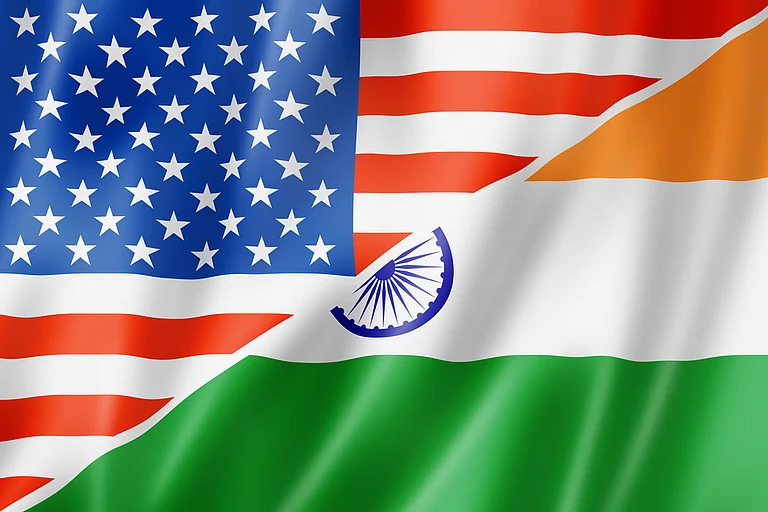US President Donald Trump's never-ending rollouts of tariffs are no longer an April fools' joke. The clock is ticking for India. With a determination to become a developed nation by 2047, India is ready to turn any stone that comes as an obstacle. As Trump tightens the screws on global trade with his protectionist measures, India has shifted into high gear, picking up momentum in its marathon of Free Trade Agreements (FTAs) negotiations.
Is India’s March Marathon in Trade Talks A Response to Donald Trump’s Reciprocal Tariffs?
In March 2025 alone—particularly in the last two weeks—India held trade and investment-related discussions with over 10 countries
In March 2025 alone—particularly in the last two weeks—India held trade and investment-related discussions with over 10 nations. The country is aggressively negotiating FTAs with partners, including the UK, Oman and the European Union. India already expressed its intention to finalise its deal with the EU by end of this year.
India's March Marathon
Between March 10 and March 14, India and the EU held the 10th round of talks to resolve the outstanding issues in their agreement. According to European Commission President Ursula von der Leyen, this would be "the largest deal of this kind anywhere in the world. " The negotiations between the two sides started way back in 2007.
On March 16, India and New Zealand announced the resumption of their trade talks after almost a decade, setting an audacious target of 60 days. The last discussions between them took place in 2010 and 2015. However, the road ahead is not easy. While New Zealand is pushing for the inclusion of the dairy sector, which India has been safeguarding its dairy sector for years to protect small farmers, in FTAs. Conversely, India wanted New Zealand to grant work opportunities similar to those given to Australia and China during their previous talks, to which New Zealand did not agree.
On March 25 and 26, India also revived its discussions with Uganda after a 23-year gap. Both sides agreed to explore Memorandums of Understanding (MoUs) for the recognition of multiple sectors including Indian Pharmacopoeia, Agriculture and Allied sectors, Traditional Medicine as well as Tele-medicine.
Abhijit Das, former professor and head at the Center for WTO Studies, feels Trump's actions have created a sense of urgency to conclude some of the ongoing FTA negotiations, however, this is not unusual.
"India has demonstrated agility before, having concluded the UAE FTA in a record three months from start to finish," Ajay Srivastava, founder of Global Trade Research Initiative (GTRI) notes, adding that the recent flurry of diplomatic engagements may signal a renewed push to conclude key deals.
Throughout the month, India also held trade discussions with Sweden, Egypt, the Slovak Republic, Hungary, Malaysia and Cuba. Commerce and Industry Minister Piyush Goyal also emphasised exploring the untapped potential for economic and trade expansion in the Latin American and Caribbean (LAC) region. The LAC covers a wide area extending from the Bahamas and Mexico to Argentina and Chile.
However, while experts see the rush in trade deals as a reaction to global trade shifts, the Indian government insists this momentum reflects India's improved global standing.
"Several countries want to access and explore the Indian market. Thus, it would be wrong to assume that the trade talks and other dialogues between India and other countries have gained momentum just because of Trump's reciprocal tariff," said a Ministry of External Affairs (MEA) official.
India Through Reciprocal Tariff Challenge
On March 29, India concluded trade talks with the US in New Delhi. Following the four days of discussions, both parties "broadly come to an understanding on the next steps towards a mutually beneficial, multi-sector Bilateral Trade Agreement (BTA), with the goal to finalise its first tranche by fall 2025", said the commerce ministry in a statement. There was no mention of tariff relaxation for India.
On the other hand, speaking from the Oval Office on Tuesday, Trump confidently declared that India will soon reduce its tariffs substantially—possibly hinting at the outcome of the recent talks. Earlier, Trump in his speech acknowledged deep ties between the two nations many times but India has been in Trump’s crosshairs for a while now, frequently being labeled as a “tariff abuser”.
Das feels that, ideally, the US should refrain from imposing reciprocal tariffs on India during the ongoing trade negotiations not only as a gesture of good faith but also the country's high tariffs are fully in line with its World Trade Organization (WTO) commitments. "If the US proceeds with such tariffs, India will need to devise appropriate strategies to protect its interests," Das adds.
Hence, it seems imperative for India to draw a proactive strategic map to engage with other markets which could help mitigate potential disruptions from April 2.
Experts like Srivastava also see India creating a more predictable and stable trade environment by expanding and finalising FTAs with a broader set of trade partners. "This approach can help navigate the complexities of reciprocal tariffs by establishing clearer rules and reducing reliance on any one country’s trade policies," Srivastava explains.
Assessing the long-term impact of Trump's "Liberation Day" tariffs on India will require a few more months or years. While in the short-term it does not seem good—can India turn its diplomatic momentum into lasting economic gains?


